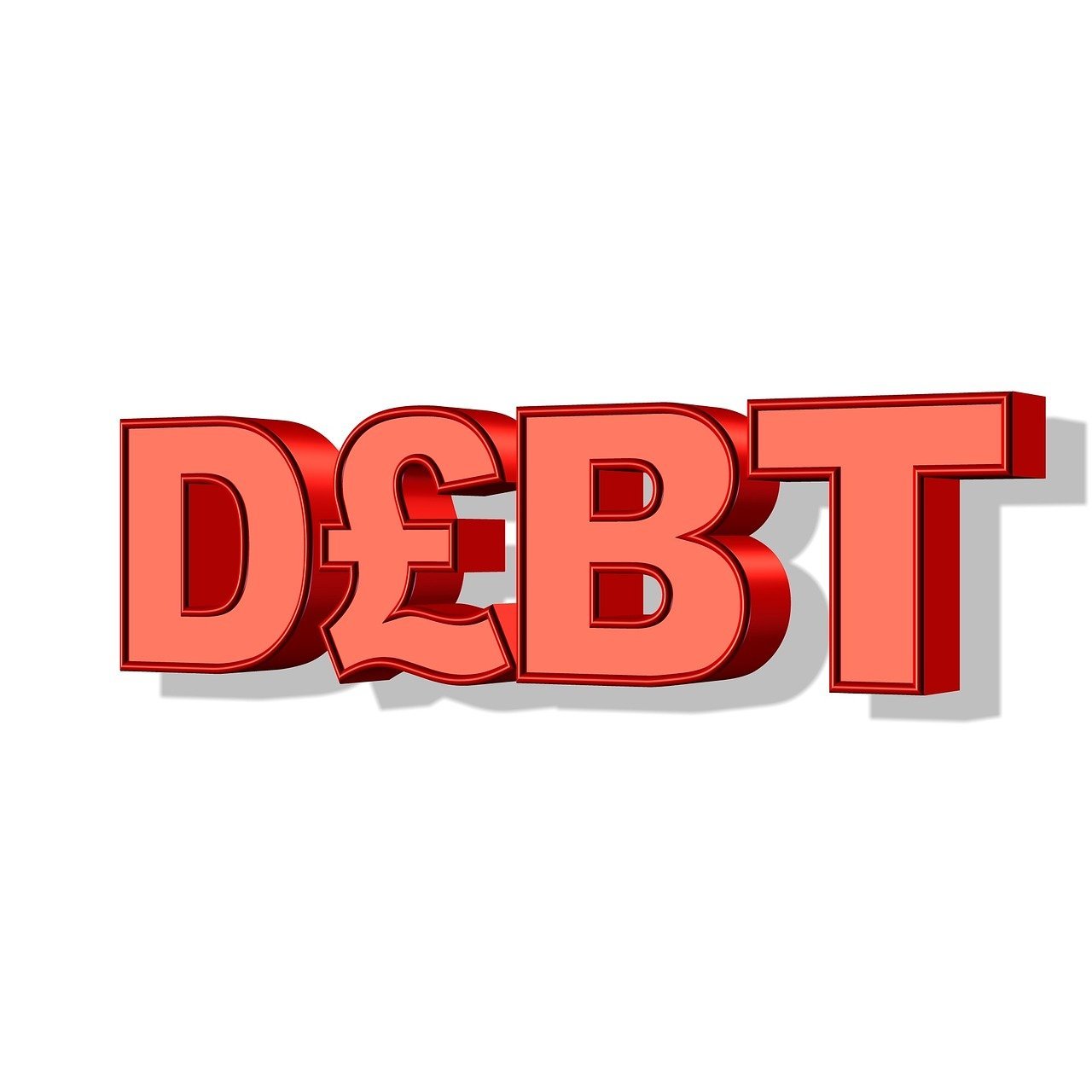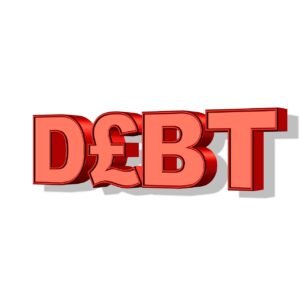Are you feeling overwhelmed by your debt? Don’t worry, you’re not alone. It’s time to take control of your financial situation and develop a strategic plan for paying down that debt. To start, consider focusing on high-interest debt first, as this can save you a significant amount of money in the long run. Additionally, explore options like debt consolidation or refinancing to potentially lower your interest rates and streamline your payments. By taking these steps, you’ll be on your way to achieving financial freedom and peace of mind. So, let’s get started on your journey to becoming debt-free with this article ‘Unlock Financial Freedom: Your Ultimate Guide to Paying Down Debt Effectively’.

Assesing your current debt situation
Gather all your financial statements
To assess your current debt situation, start by gathering all your financial statements. This includes credit card bills, loan statements, and any other documentation that shows your outstanding debts. Having all your financial statements in one place will allow you to have a clear overview of your debts.
List all your debts
Once you have gathered all your financial statements, list down all your debts. Include the name of the creditor, the outstanding balance, and the minimum monthly payment for each debt. This step will help you have a comprehensive view of the debts you owe.
Calculate your total debt amount
After listing all your debts, calculate the total amount of debt you have. Add up all the outstanding balances to get a clear picture of your overall debt load. Knowing the exact amount you owe will help you in developing a plan to pay off your debts.
Analyze the interest rates on each debt
Next, analyze the interest rates on each of your debts. Some debts might have a higher interest rate than others. It is important to understand the impact of interest rates on the overall cost of your debt. By identifying the high-interest debts, you can prioritize them in your debt repayment strategy.
Prioritizing high-interest debt
Identify high-interest debts
Identify the debts that have high-interest rates. These are the debts that cost you the most in terms of interest payments. By focusing on paying off high-interest debts first, you can save money in the long run.
Understand the impact of high interest on overall debt
High-interest debts can significantly increase the overall cost of your debt. The longer it takes to pay off high-interest debts, the more interest you accrue. Understanding the impact of high-interest rates will motivate you to prioritize these debts in your repayment plan.
Create a list of high-interest debts to focus on
Create a list of high-interest debts that you want to prioritize. Rank them based on the interest rates, with the highest interest rate at the top. This will help you stay organized and focused on paying off the debts that cost you the most.
Consider the snowball or avalanche method for repayment
When prioritizing high-interest debts, consider using either the snowball method or the avalanche method for repayment. The snowball method involves paying off the smallest debt first, while the avalanche method focuses on paying off the debt with the highest interest rate first. Choose the method that aligns with your financial goals and motivates you to keep moving forward.
Exploring debt consolidation options
Understand the concept of debt consolidation
Debt consolidation is a financial strategy that involves combining multiple debts into a single loan or payment. This can simplify your debt repayment process by having only one monthly payment instead of multiple payments to different creditors.
Research various debt consolidation options
Research different debt consolidation options that are available to you. This could include balance transfer credit cards, personal loans, or home equity loans. Each option has its own advantages and disadvantages, so it’s important to understand the terms and conditions of each option before making a decision.
Evaluate the pros and cons of debt consolidation
Consider the pros and cons of debt consolidation before making a decision. Debt consolidation can lower your monthly payments, simplify your debts, and potentially reduce the interest rates you are paying. However, it may also increase the overall cost of your debt and require collateral in some cases. Evaluate these factors to determine if debt consolidation is the right choice for you.
Determine if debt consolidation is a suitable choice
Based on your research and evaluation, determine if debt consolidation is a suitable choice for you. Consider your financial situation, your ability to make the monthly payments, and the impact on your overall debt. If debt consolidation aligns with your goals and helps you manage your debts more effectively, it might be the right option for you.
Refinancing as a debt reduction strategy
Learn about refinancing as a debt management tool
Refinancing can be a powerful tool for managing and reducing debt. By refinancing, you can potentially lower the interest rates on your debts and extend the repayment period, resulting in lower monthly payments. Research and understand the concept of refinancing to determine if it is a viable option for you.
Assess the feasibility of refinancing your debts
Assess whether refinancing your debts is feasible for your financial situation. Consider factors such as your credit score, income stability, and the potential savings from refinancing. Consult with financial advisors or lenders to determine if you qualify for refinancing and if the potential savings outweigh the costs involved.
Consider working with a financial advisor or planner
Working with a financial advisor or planner can provide valuable guidance in the refinancing process. They can help you evaluate your options, choose the best refinancing strategy, and navigate through the application process. Their expertise can save you time and ensure you make informed decisions.
Explore different refinancing options available
Explore different refinancing options available, such as refinancing with a new lender or using a home equity loan. Compare the terms, interest rates, and fees associated with each option. Look for options that offer the most favorable terms and potential savings.

Creating a budget and cutting expenses
Evaluate your current income and expenses
To tackle your debt, it’s essential to evaluate your current income and expenses. Take a close look at your monthly income and all your expenses, including both fixed and discretionary spending. Understanding your cash flow will help you identify areas where you can potentially cut expenses and allocate more funds towards debt repayment.
Identify areas where expenses can be reduced
Identify areas where you can reduce your expenses to free up more money for debt repayment. Look for discretionary spending that can be temporarily cut back or eliminated altogether. This could include eating out less, canceling unused subscriptions, or finding more cost-effective alternatives for your regular expenses.
Develop a realistic budget to allocate funds towards debt repayment
Developing a realistic budget is crucial in managing your debt effectively. Allocate a portion of your income towards debt repayment while ensuring that you can still cover your necessary expenses. This will help you stay on track and make consistent progress towards paying off your debts.
Monitor and adjust your budget regularly
Regularly monitor your budget and make adjustments as needed. As your income or expenses change, you may need to revisit your budget and reallocate funds. Keeping a close eye on your budget will ensure that you are always maximizing your debt repayment efforts.
Increasing your income sources
Explore opportunities for additional income
Increasing your income can significantly accelerate your debt repayment journey. Explore opportunities for additional income, such as taking on a part-time job or finding freelance work. Look for ways to leverage your skills or pursue passions that have income-generating potential.
Consider part-time jobs or freelance work
Consider taking on part-time jobs or engaging in freelance work to supplement your regular income. This can provide a steady stream of additional money that can be directed towards debt repayment. Look for opportunities that align with your skills and interests to make the most out of your extra income.
Investigate passive income streams
Passive income streams can generate money without requiring continuous effort or time investment. Consider investing in real estate, stocks, or other forms of passive income-generating assets. However, it’s important to research and evaluate the risks and potential returns before pursuing passive income opportunities.
Allocate the extra income towards debt repayment
Once you have increased your income, allocate the extra money towards debt repayment. Resist the temptation to increase your spending and instead focus on reducing your debts. By channeling the additional income towards debt repayment, you can become debt-free faster and save on interest charges.

Negotiating with creditors and seeking assistance
Contact your creditors for potential negotiation
Reach out to your creditors to explore potential negotiation options. Communicate your financial situation and explain your willingness to repay your debts. In some cases, creditors may be open to reducing interest rates, waiving fees, or creating more favorable repayment terms.
Inquire about debt relief or payment restructuring programs
Inquire with your creditors about available debt relief or payment restructuring programs. Some creditors may offer hardship programs or debt management plans that can help you lower your monthly payments or interest rates. Consider these options in your quest to manage and repay your debts.
Seek assistance from credit counseling agencies
Credit counseling agencies can provide valuable guidance and assistance in managing your debts. They can help you negotiate with creditors, create a realistic budget, and develop a debt management plan. Research reputable credit counseling agencies and seek their assistance to ensure you are making informed decisions.
Research debt management plans or debt settlement options
Explore debt management plans or debt settlement options as potential alternatives. These programs can help you consolidate your debts or negotiate with creditors to settle for a reduced amount. However, it’s important to understand the potential impact on your credit score and evaluate the associated costs and risks.
Developing a debt repayment strategy
Explore different repayment strategies
There are various debt repayment strategies to choose from, such as the snowball method, the avalanche method, or the debt stacking method. Each strategy has its own approach and can be tailored to your specific financial situation. Research different strategies and choose the one that aligns with your goals and motivates you to stick with your plan.
Set specific goals and timelines for each debt
Set specific goals and timelines for each debt you want to pay off. Determine how much you can allocate towards each debt and create a repayment schedule. By breaking down your debt into smaller, manageable goals, you can maintain motivation and track your progress more effectively.
Consider consolidation loans or balance transfers
Consolidation loans or balance transfers can be effective tools for simplifying your debts. Research different options and determine if consolidating your debts into a single loan or transferring balances to a low-interest credit card is advantageous for you. Consider the terms and costs associated with these methods before making a decision.
Monitor your progress and make adjustments as needed
Regularly monitor your progress and make adjustments as needed. As you make payments and get closer to eliminating your debts, celebrate your achievements and reassess your strategy if necessary. Stay flexible and be open to adapting your plan as your financial situation evolves.
Building an emergency fund
Recognize the importance of an emergency fund
Building an emergency fund is essential to prevent a financial setback while paying off your debts. Recognize the importance of having savings to cover unexpected expenses or emergencies. An emergency fund acts as a safety net and prevents you from relying on credit cards or loans when unexpected costs arise.
Start setting aside money for unexpected expenses
Start setting aside money specifically for your emergency fund. Create a separate savings account and set up automatic transfers from your income. Gradually build up your emergency fund over time by consistently contributing a portion of your income.
Establish a financial safety net
Once you have accumulated an adequate emergency fund, you can establish a financial safety net. This safety net should cover at least three to six months’ worth of living expenses. Having this cushion will give you peace of mind and allow you to handle unexpected expenses without derailing your progress towards paying off your debts.
Prioritize debt repayment while simultaneously saving
While building your emergency fund, it’s important to continue prioritizing your debt repayment. Find a balance between allocating funds towards your debts and setting aside money for your savings. This way, you can make progress on both fronts and maintain financial stability.
Seeking professional financial advice
Consult a financial advisor
If you feel overwhelmed or uncertain about managing your debts, consider consulting a financial advisor. A financial advisor can provide personalized guidance tailored to your financial situation. They can analyze your debts, help you develop a comprehensive repayment plan, and provide insights on strategies to manage your finances effectively.
Discuss your debt situation and financial goals
During your consultation, discuss your debt situation and financial goals with the financial advisor. Share details about your debts, income, expenses, and any specific concerns you have. This will help the advisor better understand your situation and provide more targeted recommendations.
Receive personalized guidance and strategies
The financial advisor will provide personalized guidance and strategies based on your unique circumstances. They will analyze your debts, evaluate different options, and present you with a comprehensive plan to pay off your debts effectively. Take advantage of their expertise and ask any questions or clarifications you may have.
Implement professional recommendations
Implement the recommendations provided by the financial advisor. Follow their guidance on debt repayment strategies, budgeting, and any other financial aspects they advise on. By implementing their recommendations, you can optimize your debt repayment journey and work towards achieving your financial goals.
In conclusion, developing a strategic plan for paying down debt is crucial in achieving financial freedom. Assessing your current debt situation, prioritizing high-interest debt, exploring debt consolidation and refinancing options, creating a budget, increasing income, negotiating with creditors, developing a debt repayment strategy, building an emergency fund, and seeking professional financial advice are all steps that can help you effectively manage and eliminate your debts. Remember to stay committed, monitor your progress, and adapt your plan as needed. With determination and a well-thought-out strategy, you can become debt-free and pave the way for a more secure financial future.

